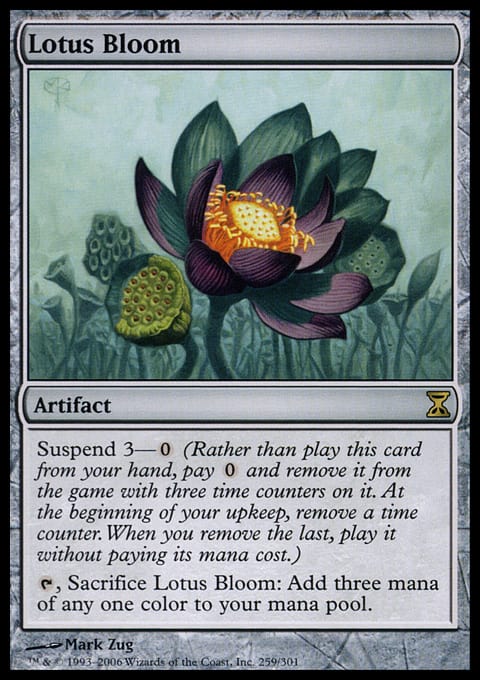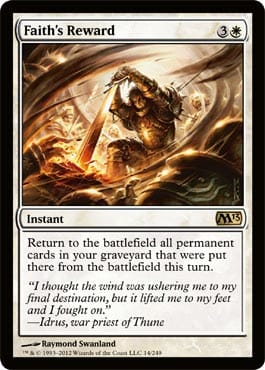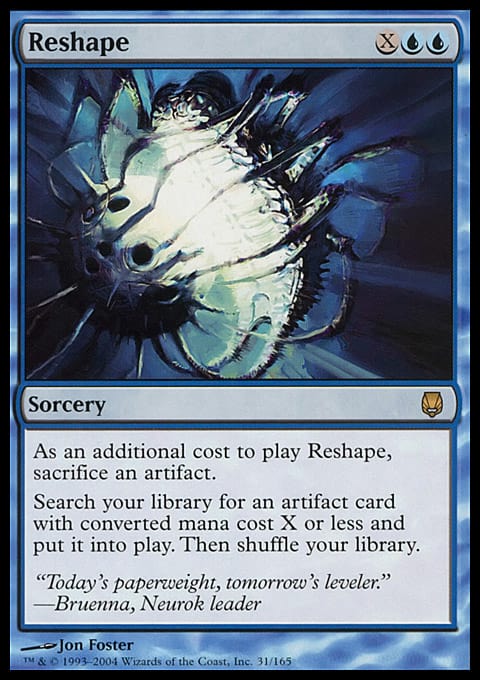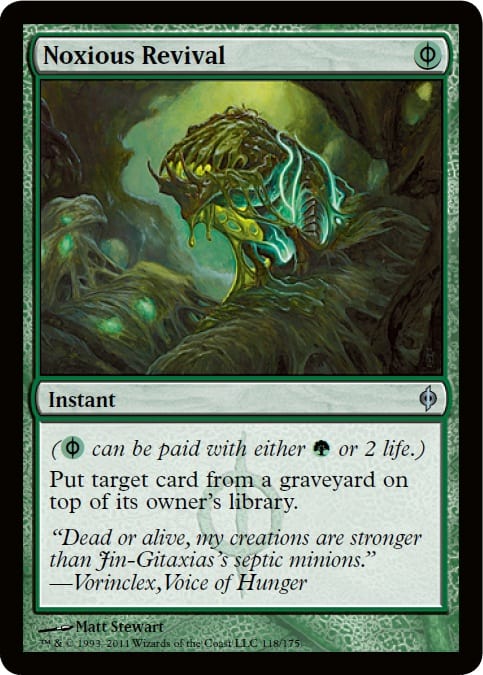My name is Carlos, and I like to play bad decks.
Fragile decks with awful mana, worse curves, built on the promise of convoluted six-card combos, with no back-up plan to speak of: These were my bread and butter when I was first coming into the world of competitive Magic. Niv-Mizzet, the Firemind and Mindmoil, Ghostway and Dormant Sliver, Petals of Insight and Psychic Puppetry; don’t even get me started on Zuberas and Second Sunrise!
It all started so long ago that I can’t remember the first time I put together deck like that and took it to a tournament. I know that since I’ve been playing more and more, I’ve tried to get over the habit—to tell myself that I’m better than those decks—and for the most part, I’m successful. I can usually tell when I’m approaching the point of no return and set a different course before it’s too late.
Sometimes, though, I just feel the itch. I know better, I absolutely do—but there’s this sweet deck, and it’s calling to me! Sometimes, you just get the bug, and you have to get it out of your system. You can thank Chris Lansdell (@lansdellicious) for the deck with my name on it this time. It’s a deck that we’ve seen before in multiple formats; it’s almost always terrible, easy to hate out, and certainly not for the faint of heart. The first time I saw the deck was this deck tech from Worlds 2006 in Paris:
For anyone who couldn’t or didn’t watch the video, the gist of the deck is this: You sacrifice a bunch of lands and artifacts that generate mana and use the mana to draw a bunch of cards with things like Skycloud Egg and Chromatic Star. Then, Second Sunrise buys back all of your permanents so you can do it again! And again. And again. Until you’ve drawn your entire library.
One.
Card.
At.
A.
Time.
Let’s be clear here, there’s no guarantee that you’ll be able to draw your deck—you can always just whiff on finding a Second Sunrise to keep the loop going. That means your opponent has to sit there while you indulge in needlessly tedious library manipulation. Once you’ve emptied your deck, you can generate infinite mana with your Lotus Blooms and then kill any number of ways.
This is the kind of deck that’s only for the truly masochistic. Games are won and lost in fractions of percentage points gained and lost depending on whether you shuffle between your Conjurer's Baubles or not.
What kind of unreasonable person would willingly subject himself and his opponents to this kind of game? This guy!
Building Modern Eggs
Eggs is the same in every format. The pieces are different, but the deck is always built on the same principle; it’s very formulaic that way. The pieces always change, but the decklist is always the same. All you need is a critical mass of the pieces. So, what are the pieces?
The Eggs
These comprise your card-drawing engine, and they are really the foundation of the deck in Modern. The most important one by far is Conjurer's Bauble. In conjunction with shuffle effects like Ghost Quarter and Reshape, this card lets you be ever so slightly more consistent by letting you shuffle in extra copies of Second Sunrise.
The mana fixing from Chromatic Sphere and Chromatic Star is also very important, but really, they’re in the deck for the cantrip. It’s very important that these cycle virtually for free since the first few iterations can be very, very tight on mana.
The Mana
The two constraints on any combo deck are cards and mana. The key to building a successful combo deck is to make sure that you have an adequate supply of both, and the key to being a proficient combo player is to optimize both of these resources.
Generally, this deck is much more constrained on mana than any other resource in the early cycles. Because of that, Lotus Bloom is probably the most important card in your deck. It is all but impossible to combo off without at least one Lotus Bloom in play. To that end, Reshape is very much like Tinker for this deck. You get to turn your Chromatic Stars into Lotuses or into more Chromatic Stars to keep the engine churning.
In addition to these, however, you also have Ghost Quarter for your own lands as well as fetch lands to approximate Archaeological Dig. One last thing that I’ve been trying with some success recently is Locket of Yesterdays to make all of your eggs free.
The Engine
One of the reasons that this is a deck in Modern is the huge boost in consistency it’s received from recent sets. The biggest issue that this deck always had was that it just didn’t work without a Second Sunrise. This forced you to put increasingly absurd constraints on your mana, like casting Mystical Tutor, Reclaim, or even Mystical Teachings.
An extra ![]() or
or ![]() may not seem like much, but the extra cost is subtle. Not only do you have to pay for the tutor, you also have to be able to draw an extra card. Noxious Revival and Faith's Reward each only solve half of the problem, but each of those pieces is important.
may not seem like much, but the extra cost is subtle. Not only do you have to pay for the tutor, you also have to be able to draw an extra card. Noxious Revival and Faith's Reward each only solve half of the problem, but each of those pieces is important.
If you draw Reclaim or Mystical Tutor at the end of a chain of cantrips or once you’ve spent most of your mana, you’re out of luck. The biggest issue that Eggs has always had is that it’s not only fragile, but that it loses to itself mid-combo too frequently. These new pieces may not be nearly as good as the actual Second Sunrise, but the increased consistency goes a long way toward making the deck viable.
Win Conditions
Pyrite Spellbomb is the most traditional way to win the game. It’s a reasonable, if subpar, part of your engine while you’re going off, which increases the consistency of your deck. Unlike other win conditions, it’s not a mulligan if you draw it before you’re ready to win. Because of that alone, I think this is the best way to win the game before sideboarding.
In Games 2 and 3, however, your opponent will have graveyard hate, and if he exiles your one Spellbomb, you’re in trouble. Disciple of the Vault doesn’t rely on the graveyard at all, and an early Disciple even has a chance to kill someone when you’re not able to draw your entire deck. His presence in your hand or deck may make you slightly more likely to fizzle, but if you draw him, you don’t necessarily have to finish the combo, so it’s sort of a wash.
The problem with both of these cards is that they target, which leaves you vulnerable to something like Leyline of Sanctity or Ivory Mask. That’s why I kind of like the idea of going a completely different route with Laboratory Maniac. You still have to combo out fully, but you can win without ever opening yourself up to interaction using Chromatic Sphere. With Chromatic Sphere, you draw a card as part of the mana ability, which can’t be responded to, which is pretty sick!
The List
So, with all of this taken into consideration, this is what my current list looks like:
Modern Eggs
- Lands (21)
- 1 Forest
- 8 Island
- 3 Plains
- 4 Ghost Quarter
- 4 Misty Rainforest
- 1 Marsh Flats
- Spells (39)
- 4 Lotus Bloom
- 4 Reshape
- 1 Locket of Yesterdays
- 4 Chromatic Star
- 4 Chromatic Sphere
- 4 Conjurer's Bauble
- 1 Pyrite Spellbomb
- 1 Aether Spellbomb
- 4 Second Sunrise
- 3 Faith's Reward
- 2 Noxious Revival
- 3 Sleight of Hand
- 1 Serum Visions
- 2 Edge of Autumn
- 1 Wargate
- Sideboard (15)
- 1 Torpor Orb
- 1 Grafdigger's Cage
- 3 Seal of Primordium
- 4 Leyline of Sanctity
- 2 Echoing Truth
- 1 Laboratory Maniac
- 1 Pithing Needle
- 2 Defense Grid
There are a few techy cards in this list, like Wargate. Wargate is another copy of Reshape that can find sideboard cards and Ghost Quarters, which is pretty awesome. Between Reshape and the Wargate, you get to play all kinds of sweet singletons in your sideboard that crush key matchups.
The other interesting decision is whether to play Serum Visions or Sleight of Hand. Originally, this decision was made based on card availability. I wanted to play the full set of Serum Visions, but I only had two. The issue is that Serum Visions digs deeper, but it doesn’t put cards into your hand, so if it’s your last shot at finding a Second Sunrise, it’s much worse.
The Combo Phase
Setting Up
A perfect opening hand for this deck has two lands, one of which is a fetch land or Ghost Quarter, two or three eggs, and some number of Lotus Bloom, Reshape, and Second Sunrise. With a perfect hand, you can dream about going off on turn two, seriously think about it on turn three, and be very sure of yourself on turn four or later.
The order in which you play your eggs usually isn’t very important, but the sequencing of your lands is. You want to maximize the number of Ghost Quarters, fetch lands, and eggs you have in play on your Second Sunrise turn. That means playing Ghost Quarters early, then one or two basics so you can cast your eggs, and then whatever fetches you have.
The Never-Ending Sunrise
From here on, it’s all about maximizing the number of live draws in your deck every time you crack an egg. On each cycle, you want to start by casting any Noxious Revivals and then shuffling in spells you want to redraw with Conjurer's Bauble. Then, thin your deck as much as possible. This means cracking fetches and Ghost Quartering yourself before you do much else. Then, you want to cast Reshape if you have to so that you have one fewer Lotus Bloom to draw into. Then, start cracking eggs!
You generally want to leave Conjurer's Bauble and Chromatic Star around the longest, since they have extra utility. Chromatic Star loves to be sacrificed to Reshape, and Conjurer's Bauble lets you shuffle back in your business spells, so they can be worth much more than just a card. Once you’ve cracked your lands, Lotuses, and eggs, cast your Second Sunrise and ready yourself to do it all again!
The order can and should be fluid. If you don’t have any cards you want to recycle with Conjurer's Bauble, hold off on a Bauble and a shuffle effect so that if you find a Noxious Revival, you can shuffle it back in. Pay attention to the little details—those really make a difference.
Wrapping Up
Now, if you’ve made it this far and are still interested in trying this out, I have a few more tips before we wrap this up. First and most importantly, goldfish this deck a ton before even thinking about taking it to an event. It can take upward of twenty minutes to combo off, even playing at a quick pace. Practice playing through different combinations of counterspells and burn; make yourself try to go for it on different turns; just become comfortable with the deck, and then keep trying to push the deck further and further until you have a feel for where the limits are and what pieces you need to go for it under different circumstances.
I like to proxy my Second Sunrises effects while I’m playtesting and goldfishing so that I can mark them each with a different symbol or number. Then, on each combo sequence, I make a note of which copies I shuffled in. Then, if I draw one of the pieces I shuffled in, I feel that my sequencing has been validated in some sense. I understand that’s very results-oriented. For me, small things like that keep me looking for even smaller edges to be gained in how I sequence things, and that’s good, results-oriented or not.
I have a lot more to say about this deck and other decks like it; they’re a blast to play and generate a ton of free wins from people who have no idea what you’re doing. If you’re interested in hearing more about this, be sure to let me know! I’m going to be taking this to a few local Modern events in the next few weeks, and I’d be glad to write about the experience!
Here’s hoping you’ve enjoyed reading this as much as I’ve enjoyed writing it and playing it!
Carlos
@cag5383 on Twitter

































